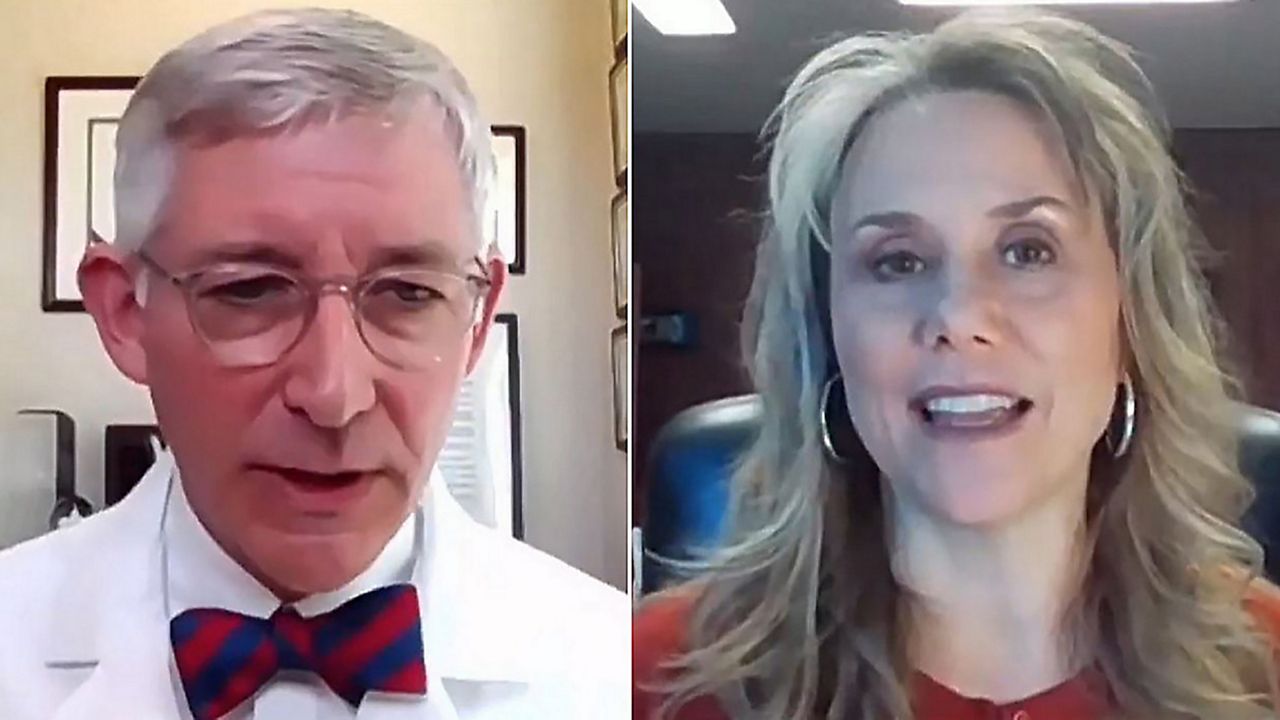COLUMBUS, Ohio — The state’s mask mandate is unlikely to end in the next few weeks, according to Ohio Department of Health officials.
Health Director Stephanie McCloud said during a virtual briefing “it’s an exciting time” in Ohio after an announcement Thursday night from Gov. Mike DeWine with the metrics that would end all health mandates in Ohio.
But officials said the state has a lot of work to do to get there.
“I would not expect that we will reach this threshold in just a few weeks,” Ohio’s Chief Medical Officer Dr. Bruce Vancerhoff said. “I think it will be longer than a few weeks. How much longer, I just don't know.”
The target is 50 cases per 100,000 people in a two-week period. As of Thursday’s dashboard update, Ohio was reporting 179.6 cases per 100,000 residents for the two-week period from Feb. 17 to March 2.
Between now and the day the mask mandate expires, Vanderhoff said Ohio is not ruling out other reopening announcements. He indicated further announcements on venue capacity are possible if numbers keep trending well.
“We'll continue to look at opportunities to responsibly open up our lives,” Vanderhoff said.
He said providing the target for ending all mandates was a sensible way to give everyone a sense of what to expect. According to Vanderhoff, residents “have wanted a mile marker, something that could be a reasonable signal to them that our vaccinations are having enough of an impact that mandatory restrictions are no longer necessary.”
The new case incidence metric for fully reopening includes confirmed and probable cases, but excludes infections among incarcerated residents. Officials also said dates are logged a bit differently than the most familiar reporting metrics — the cases will only count if they are recent infections.
According to McCloud, due to the particularities of how the figure is tabulated, Ohioans will get a look at where the state stands every Thursday, not the daily updates the state is used to receiving. Meanwhile, Ohio has stopped reporting deaths breaking with practices followed by other U.S. states.
From now on, Ohio will report deaths on Tuesdays and Fridays.
The most recent deaths update shows a staggering 752 more lives lost, she said, explaining the figure is inflated due to additions of Ohioans who died out of state, like “snowbirds” in Florida, she said.
Vanderhoff said he is reluctant to make predictions about when masks can come off because the nature of the virus is too unpredictable. The emergence of more dangerous mutations makes the future murky, he said.
“So far, everyone that I have observed nationally who has attempted to make firm predictions about this virus has been wrong, he said. “I'm going to avoid predictions.”
But the doctor sounded an encouraging tone with everything he has seen in the past few weeks being “very encouraging in terms of vaccine winning.”



